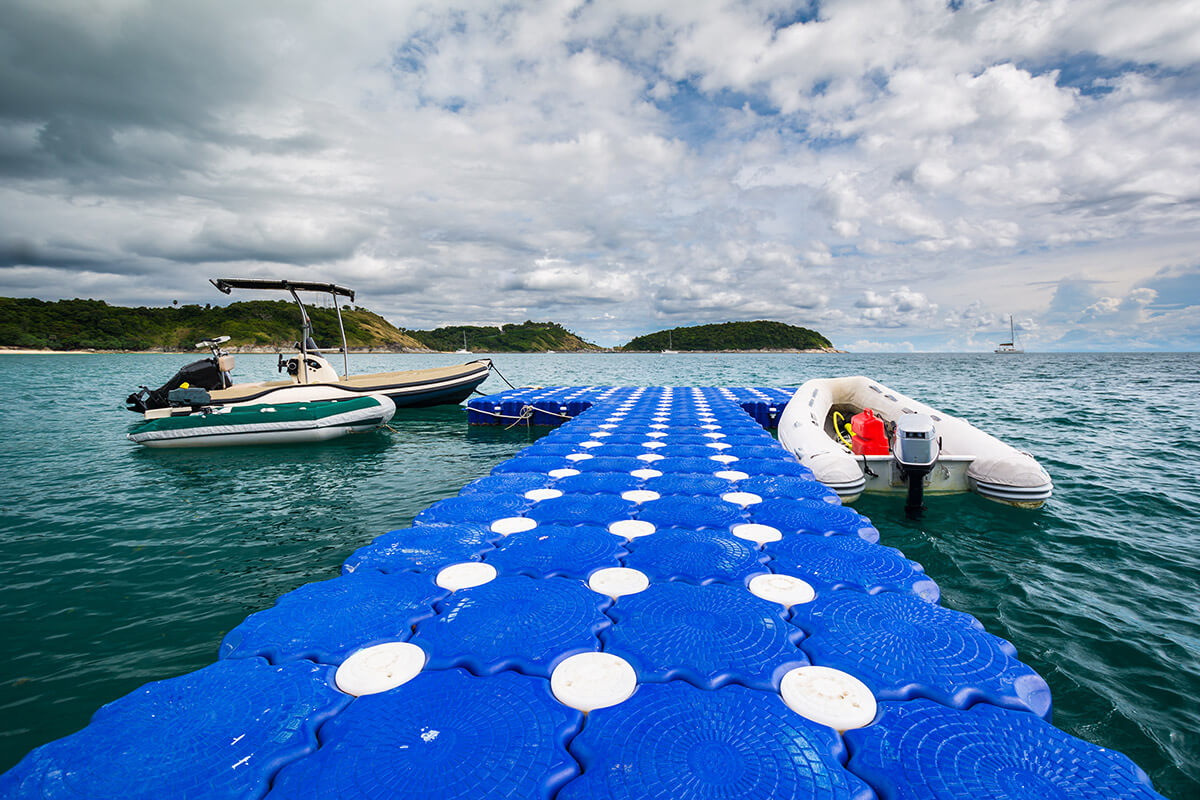Your Guide to Finding the very best Dock Company for High Quality and Dependability
Your Guide to Finding the very best Dock Company for High Quality and Dependability
Blog Article
Upgrade Your Waterfront With Resilient Floating Docks
Updating your beachfront with resilient floating docks can dramatically improve both functionality and appearances, providing a functional remedy for various water tasks. With a range of products offered, including low-maintenance alternatives and conventional timber, picking the best dock can match your individual style and satisfy useful requirements.
Benefits of Floating Docks
Floating docks offer a wide range of advantages that improve their allure for numerous maritime applications. Unlike standard set docks, floating docks surge and autumn with the tide, guaranteeing regular accessibility for boats and boat no matter of environmental problems.
Furthermore, floating docks are less complicated to mount and transfer, providing flexibility for temporary or seasonal usage. Their modular style enables modification to fit particular requirements, whether for private marinas, domestic beachfronts, or commercial applications.
Additionally, floating docks develop minimal disturbance to the marine environment, protecting regional environments and decreasing the chance of erosion. They additionally give enhanced safety and security and stability for individuals, as their resilient nature supplies a much more flexible surface than rigid frameworks.
In addition, floating docks can help with a diverse range of tasks, such as angling, swimming, and entertainment boating, making them a valuable asset for beachfront advancement. Their versatility and practicality make floating docks a recommended selection for a range of maritime projects.
Selecting the Right Materials
Picking proper materials for floating docks is essential to their longevity, efficiency, and total performance. When picking products, take into consideration variables such as ecological direct exposure, maintenance requirements, and architectural integrity. Common materials consist of wood, plastic, aluminum, and composite options, each offering distinct advantages and downsides.
Wood, while visually pleasing, needs routine maintenance to stop rot and decay. Pressure-treated timber can improve sturdiness, but it might still succumb to water damages gradually. Plastic drifts, commonly made from high-density polyethylene, are immune to rust and call for minimal maintenance, making them an eye-catching selection for low-maintenance applications.
Aluminum is one more viable option, understood for its toughness and lightweight buildings. It is resistant to corrosion and can hold up against extreme climate condition, although it might be more pricey than various other materials. Compound products combine the very best features of timber and plastic, using a low-maintenance and durable choice that mimics the look of wood without the associated disadvantages.
Ultimately, the choice of material should align with the meant usage, environmental factors to consider, and budget restrictions, guaranteeing a useful and durable floating dock that meets your specific demands.
Installment Refine Review
The effective setup of a floating dock relies upon cautious preparation and implementation, ensuring that it runs successfully in its designated environment. The initial step entails analyzing site problems, consisting of water deepness, shoreline functions, and dominating climate patterns, which will inform the dock style and anchoring system.
Adhering to the site assessment, the next stage is to prepare the floating dock parts. This consists of putting together the structure, safeguarding floats, and attaching any kind of essential equipment. It is essential to make sure that all links are water-resistant and durable to endure aquatic problems.
When the dock is constructed, the setup procedure begins with positioning the dock in the water. This can include a crane or various other training equipment, especially for larger frameworks. Correct positioning is necessary for capability and safety and security.

Maintenance Tips for Long Life
Regular upkeep is vital for ensuring the long life and optimal efficiency of a floating dock. To attain this, begin with regular inspections at the very least twice a year, concentrating on the integrity of the dock's framework, including the flotation tools and linking equipment. Look for indications of wear, damage, or rust, and deal with any kind of issues immediately to avoid additional damage.
Cleaning is one more essential aspect of maintenance. Eliminate particles, algae, and barnacles from the dock's surface to stop unsafe problems and maintain aesthetic charm. Make use of a soft brush and a moderate cleaning agent to stay clear of damaging the dock's materials.
Furthermore, guarantee that the dock is effectively secured and secured to endure seasonal modifications in water degrees and climate problems. Check the anchoring system for stability and make adjustments as required.
Enhancing Your Outside Visual
To produce an aesthetically enticing exterior room, including a drifting dock can significantly enhance the overall aesthetic of your waterfront property. Floating docks are not only functional but can also function as a striking centerpiece that matches the natural environments - dock company. Available in various products and layouts, these docks can be tailored to match your site link property's building design and landscape
The enhancement of ornamental aspects, such as integrated lighting or stylish barriers, additionally raises the dock's visual allure. Take into consideration utilizing natural timber coatings, which blend seamlessly with the setting, or deciding for contemporary materials like light weight aluminum or composite outdoor decking that provide a sleek, modern look.
Purposefully putting planters or seating areas on or around the dock can develop inviting spaces that urge relaxation and enjoyment of waterfront sights. In addition, integrating colors and appearances that integrate with your landscape will certainly create a cohesive visual throughout your exterior location.

Conclusion

Upgrading your beachfront with resilient floating docks can substantially boost both functionality and aesthetics, offering a versatile service for numerous water activities. Unlike standard set docks, floating docks increase and loss with the tide, making sure regular accessibility for boats and boat no matter of environmental conditions.Choosing ideal materials for floating docks is crucial to their longevity, efficiency, and total efficiency.When the dock is assembled, the installation process begins with placing the dock in the water.In recap, floating docks offer numerous advantages, consisting of adaptability to water level modifications and a range of product alternatives.
Report this page